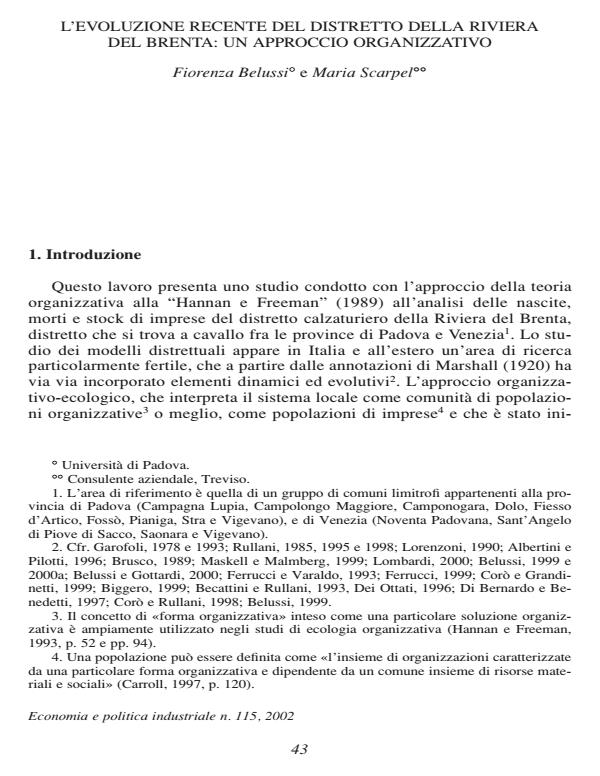L'evoluzione recente del distretto della Riviera del Brenta: un approccio organizzativo
Journal title ECONOMIA E POLITICA INDUSTRIALE
Author/s Fiorenza Belussi, Maria Scarpel
Publishing Year 2002 Issue 2002/115
Language Italian Pages 29 P. File size 290 KB
DOI
DOI is like a bar code for intellectual property: to have more infomation
click here
Below, you can see the article first page
If you want to buy this article in PDF format, you can do it, following the instructions to buy download credits

FrancoAngeli is member of Publishers International Linking Association, Inc (PILA), a not-for-profit association which run the CrossRef service enabling links to and from online scholarly content.
The empirical study presented here applies the population ecology approach to the analysis of the evolutionary pattern of an industrial district localised in the Northeast region of Italy: the Riviera del Brenta, a district specialised in high-fashion woman footwear production. Our work deals specifically with the issue of firms dynamics (birth rate, expansion and exit). It integrates the typical elements of an industrial evolutionary approach with the "ecological" theories that are interested to the process of formation of organisations, to their growth or decline. In other words, to the process that gives rise to organisational variety (determined both by the growth of organisations that adopt a certain organisational form and by the relative weight of the different forms). The key concepts of our approach are respectively the "organisational community" (the whole population of firms, thus the formation of the industrial structure of the district), the individuation of the different "organisational forms" (the specific sub-populations of the district), and the notion of density, which considers the vital rates, and allows us to evaluate the evolution of a population during its history. Considering a long time-series data base, which has been constructed by us using three different archives and data sets (Inps, Cerved, and historical sources), we have shown the development of the district’s firm population since 1989, the year in which Giovanni Luigi Voltan founded the first footwear firm around Stra (a village situated in the province of Venice). The studied density curves of the individual sub-populations of firms confirm the "Population ecology" hypotheses, originally developed by Hannan and Freeman. First, the growth of the district’s firm population always follows a reverse U-shaped curve, which signals that, after an initial environmental legitimation to growth, if conditions (technology, markets, etc.) do not change, an irrevocable exhaustion of "local resources" occurs, and competition increases for their utilisation. Second, the modality of growth of each specific sub-population of the district firms is always non monotonic.
Fiorenza Belussi, Maria Scarpel, L'evoluzione recente del distretto della Riviera del Brenta: un approccio organizzativo in "ECONOMIA E POLITICA INDUSTRIALE " 115/2002, pp , DOI: